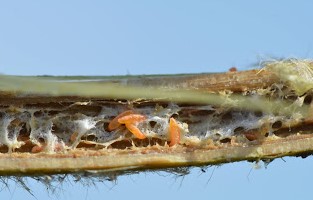
White mold gall midge in soybean stem.
Since 2018, a newly described pest species, soybean gall midge (Resseliella maxima) (Fig. 1), has become a concern for soybean growers in southwest Minnesota, Nebraska, South Dakota, Iowa, and Missouri.
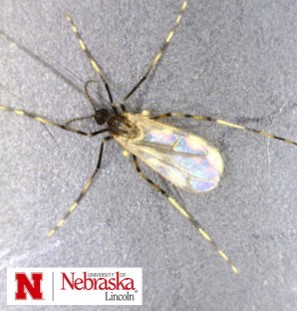
Fig. 1. Soybean gall midge adult. Note the striped
legs with mottled wings and orange abdomen.
Control with insecticide is difficult because adult emergence is prolonged with overlapping generations, and larvae are protected inside the plant. Resistant crops have not yet been found. Larvae are clear white initially, but turn bright orange as they mature.
Further information on management is available at the U of MN Extension website: Soybean gall midge in Minnesota soybean.
White mold gall midge
While searching for soybean gall midge larvae in the region, a similar looking midge species, the white-mold gall midge (Karshomyia caulicola) has also been found (Fig. 2). Detections of this species on soybean have been confirmed from Minnesota and nearby states.
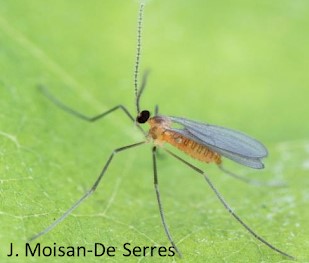
Fig. 2. White mold gall midge adult. Note the
uniform gray wings, legs, and antennae.
It infests soybean and other crops (e.g., dry beans and sunflower) that are infected with white mold (i.e., Sclerotinia stem rot). Larvae feed on the white mold fungus growing on or in plants. This species of midge is not a pest of plants.
Mature larvae tend to be paler orange and sometimes with a pink hue compared to the bright orange mature soybean gall midge, though color alone is not a reliable identification method for distinguishing the two species.
Larva identification
Immature stages of white mold gall midge on white mold-infected soybean plants or in soil of soybean fields could be confused for immatures of the soybean gall midge.
Soybean gall midge
Timing: As early as 3rd leaf stage
Location in field: Field edges, especially near previous year’s soybean

White mold gall midge
After flowering and onset of white mold
Throughout field where white mold present
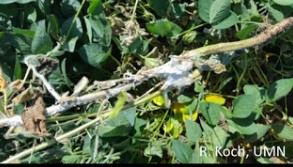
Location on plant: Under epidermis; lesions near stem base

Color of mature larvae (variable over time for both species): More intense orange
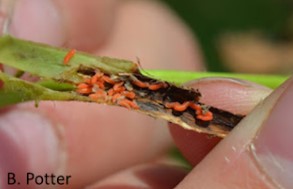
Less intense orange
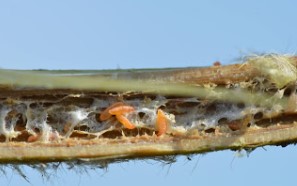
Source : umn.edu